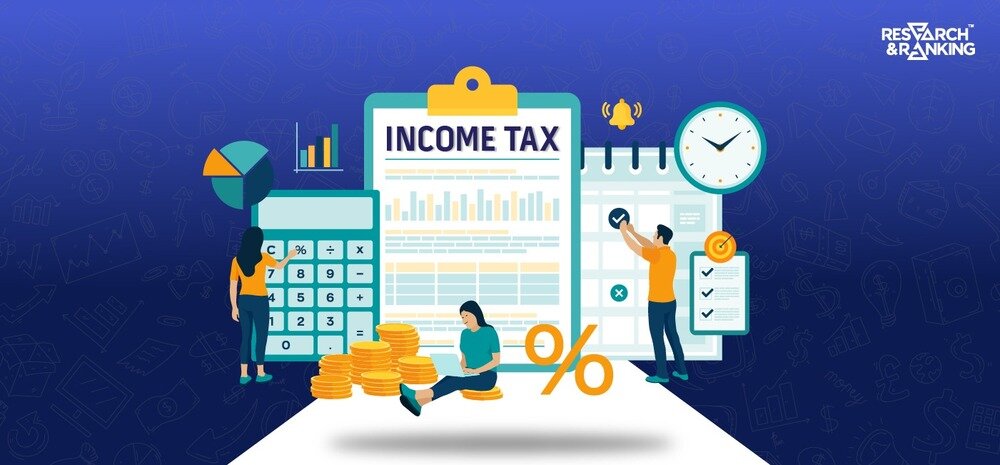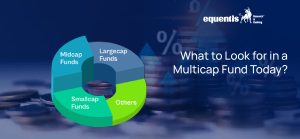The Interim Union Budget 2024-25 was announced recently. All eyes were on the income tax slabs and the applicable tax rates for the forthcoming year. However, being an election year and an interim budget, the tax slabs and rates were left unchanged. Most have applauded the announcement, while some are figuring out basic income tax concepts.
Indeed, the Budget, finance, taxation, and their impact on individuals can be challenging to understand. This blog attempts to explain helpful income tax knowledge so one can understand how one’s income is taxed.
Basics of Income Tax for Beginners
Soon, a new fiscal year will start. It is also when we fill out Form 16 and file Income Tax Returns. It can be quite confusing for those filling out the forms for the first time, given the many aspects of filling it out. Here, we explain some basic income tax concepts to make tax filing easier.
1. Defining the ‘Previous year‘
After you fill in the personal details in your ITR, there is a field ‘Previous Year.’ It is one of the most crucial income tax basic concepts. It is the year before the year the tax is filed. Individuals file their income tax returns for a fiscal year in the following year. For example, if an individual files his tax in 2023-24, 2022-23 is the Previous Year. Simply put, it is the year before the current year when one files the returns.
Assessment Year
Along with the ‘Previous Year,’ there is also the ‘Assessment Year, ’which is crucial from the perspective of basic income tax knowledge. The assessment year is the year right after the present financial year. The assessment year also starts from 1 April to 31 March.
Both the Previous and the Assessment years can be explained with an example.
Period: April 1, 2023 – March 31, 2024.
Financial year – 2023-24
Assessment year – 2024-25
Understanding your Salary
In income tax basic concepts, the income tax rate applies to one’s income depending on one’s income slab or category. This information about the income is available in the individual’s salary slip.
The salary slip, also known as the pay slip, which your HR department maintains, gives the break-up of the salary structure in a given month. The salary slip contains information about the basic salary, house rent allowance (HRA), conveyance allowance, and medical allowance.
As fundamental income tax basics, the employers also mention the applicable deductions such as professional tax, Employee Provident Fund (EPF), and Tax Deducted at Source (TDS).
Income On Which You Pay Tax
There is so much to income taxation, and every aspect of it is crucial to income tax basic concepts. Generally, most individuals are either salaried, businesspersons or self-employed. While this is their core income, they could also get income from other sources. In this case, your total income is your income as a salaried individual/self-employed or a businessman.
Sources of Income for Tax Filing
To understand the basic income tax concepts, we must also know the different sources of income. The following are the income heads from which an individual can earn and are taxed.
- Business Income: These are the profits from owning and operating a business, including self-employment earnings, partnerships, and sole proprietorships.
- Rental Income: This is the income from a house or a building that could be self-owned/ self-occupied or rented.
- Income from Capital Gains: This is the income one makes from selling capital goods or investments. Even if an individual makes a loss, they will still be taxed.
- Income from Other Sources: This is the income from other sources not included above, such as interest on savings bank accounts, fixed deposits, family pensions, or gifts.
Deductions
As a part of income tax basic concepts, deductions are claims individuals make to reduce their taxable income. It is a tax benefit that helps them save tax. Individuals with additional income from various investments and other expenses can claim tax deductions to lower their taxable income.
Deductions Under Section 80C
One of the most significant and helpful income tax basic concepts is the deduction under Section 80C. This section of the Income Tax Act 1961 allows deductions for investments in specified instruments such as Public Provident Fund (PPF), National Savings Certificate (NSC), Equity Linked Savings Scheme (ELSS), life insurance premiums, tuition fees for children, home loan EMIs, Post Office Time Deposits, etc., up to a maximum limit of Rs. 1.5 lakh per financial year.
Standard Deduction
Another significant concept in income tax basic concepts is standard deduction. A standard deduction is another claim by salaried individuals and pensioners, irrespective of any investment or spending by taxpayers. As per the new FY 2023-24 tax regime, salaried individuals can get a standard deduction of Rs. 50,000. The same standard deduction applies to pensioners, while family pensioners qualify for a standard deduction of Rs.15,000.
TDS or Tax Deducted at Source
A deduction is one of the most crucial income tax basic concepts. It is Tax Deducted at Source or TDS. TDS is the tax deducted by the person making the payment. The amount of tax deducted is as per the rules prescribed by the Income-Tax department. An employer will assess your income and deduct the applicable amount if your income exceeds the Rs. 2,50,000 threshold. Also, your fixed deposit will attract a TDS on the interest income. The TDS is generally 10% and can be 20% if the PAN card number is not mentioned.
How to Calculate Income Tax Payable
Income tax basic concepts also include the income tax payable. It is the amount of tax one has to pay in a year. An individual’s final tax payable is determined by the taxable income and the rates that apply to it. From this tax payable, one deducts the TDS to arrive at the final tax payable. You can also learn more about income tax concepts with our blog.
Illustration on Salary TDS
Using some of the income tax basic concepts and deductions discussed, we take an example to understand the basic income tax formula.
Anuja’s gross salary – Rs.13,00,000.
Tax-exempted HRA – Rs. 1,00,000
Tax-exempted LTA – Rs. 1,00,000
Standard Deduction – Rs. 50,000
80C deduction declared by an employee – Rs. 1,50,000
80D deduction declared by an employee – Rs. 50,000
Net Salary = Gross salary – (tax-exempted HRA) – (tax-exempted LTA) – (standard deduction)
Net Salary = 13,00,000 – 1,00,000 – 1,00,000 – 50,000.
Net Salary = Rs. 10,50,000.
Then,
Net Taxable Salary = Net salary – 80C deduction – 80D deduction
Net Taxable Salary = 10,50,000 – 1,50,000 – 50,000
Net Taxable Salary = Rs. 8,50,000
Tax Payable
Up to Rs. 5,00,000: 5% of Rs. 2,50,000 = Rs. 12,500
Rs. 5,00,000 to Rs. 8,50,000 = 20% of Rs. 3,50,000
= 70,000
Tax Payable = Rs. 12,500 + Rs. 70,000
= Rs. 82,500
Applicable TDS rate = Tax Payable / Gross Income *100
= 82,500 / 13,00,000 *100
= 6.35%
Hence, your employer will deduct 6.35% of your taxable income per the basic income tax formula.
Documents Required to File Income Tax Returns
When an individual is filing his income tax returns, he has to submit some documents. Knowing this is a part of the income tax basic concepts. These documents depend on the salary status of the citizen filing the ITR. However, the following documents are needed by the type of occupation status of the taxpayer.
Salaried Individual – The finance department provides a salaried individual with the 16A/16B form. The 26 AS reflects the TDS deducted during the year. The employee submits the rent receipt (for HRA), payslips, and other investments made under Sections 80C, 80E, 80D, and 80G should be provided.
Capital Gains – When filing ITR for capital gains, the individual must provide an ELSS statement, a mutual fund statement, proof of sale and purchase of securities/bonds, purchase/sale price of property, registration details of any residential property sold, and a capital gains statement showing stock trading and the sales of securities.
House Property – PAN card, co-owner details, property address, and home loan interest certificate.
Other Sources include interest from savings accounts, fixed deposits (FD), family pensions, or gifts.
Income Tax Slabs
In India, the income tax individuals have to pay is organized in slabs or categories in which their income falls. It is an essential part of income tax basic concepts. Every such slab has a tax rate assigned to it. Generally, the tax slabs begin from the 0 tax liability slab to the highest tax liability. It means that while some portion of income is tax-free, the remaining is taxable. Also, as the individual’s income increases, the tax rates increase.
In the recent interim Union Budget 2024-25, the tax slabs and the rates were left unchanged. The total Union Budget to be held later may change the tax slabs and the rates. Presently, two tax regimes are applicable as follows:
| (Old Regime) Income Tax Slabs: FY 2023 / AY (2024-25) | |||
| Citizens less than 60 years of age | Resident Senior Citizens (60-80 years of age) | Resident Super Senior Citizens (80 years and above) | |
| Up to Rs. 2,50,000 lakh | NIL | NIL | NIL |
| Rs. 2,50,000 lakh to Rs. 3,00,000 lakh | 5% | NIL | NIL |
| Rs. 3,00,001 to Rs. 5,00,000 | 5% | 5% | NIL |
| Rs. 5,00,001 lakh to Rs. 10,00,000 lakh | 20% | 20% | 20% |
| Above Rs. 10,00,000 lakh | 30% | 30% | 30% |
| (New Regime) Income Tax Slabs | |||
| Up to Rs. 3,00,000 | Nil | ||
| Rs. 3,00,001 to Rs. 6,00,000 | 5% | ||
| Rs. 6,00,001 lakh to Rs. 9,00,000 lakh | 10% | ||
| Rs.9,00,001 to Rs. 12,00,000 | 15% | ||
| Rs. 12,00,001 to Rs. 15,00,000 | 20% | ||
| Above Rs. 15,00,000 | 30% | ||
| Source: Finance Bill, Interim Union Budget, 2024-25. | |||
Income Tax Returns
The income tax basic concepts also include, Income Tax Returns (ITR). ITR is a form from the Income-Tax department with seven such forms available. They are ITR-1, ITR-2, ITR-3, ITR-4, ITR-5, ITR-6 and ITR-7. Which form applies to you depends on the sources of income, the income earned, and whether the taxpayer is an individual, a Hindu Undivided Family, or a company.
Conclusion
As a responsible citizen, knowing income tax basics is very important. Here, we familiarised ourselves with some of the frequently used basic income tax concepts and some that also give tax relief.
Together, the income tax concepts are of great help in understanding taxation.
FAQ
What is the basic concept of income tax?
The income tax basic concepts start with an individual/non-individual mandated to pay income tax earned on income as per the applicable laws of I-T.
How do you calculate income tax?
Income tax is calculated by deducting the exemptions from your gross income to arrive at the taxable income. The standard deduction is subtracted, and the net tax payable is derived. On this, the income tax is charged as per the applicable rate.
Who pays income tax?
As per the Income-Tax Act 1961, the income tax basic concepts require every person to pay income tax. Section 2(3) defines a person as a natural and an artificial person/entity.
How useful was this post?
Click on a star to rate it!
Average rating 3 / 5. Vote count: 2
No votes so far! Be the first to rate this post.
I’m Archana R. Chettiar, an experienced content creator with
an affinity for writing on personal finance and other financial content. I
love to write on equity investing, retirement, managing money, and more.
- Archana Chettiar













